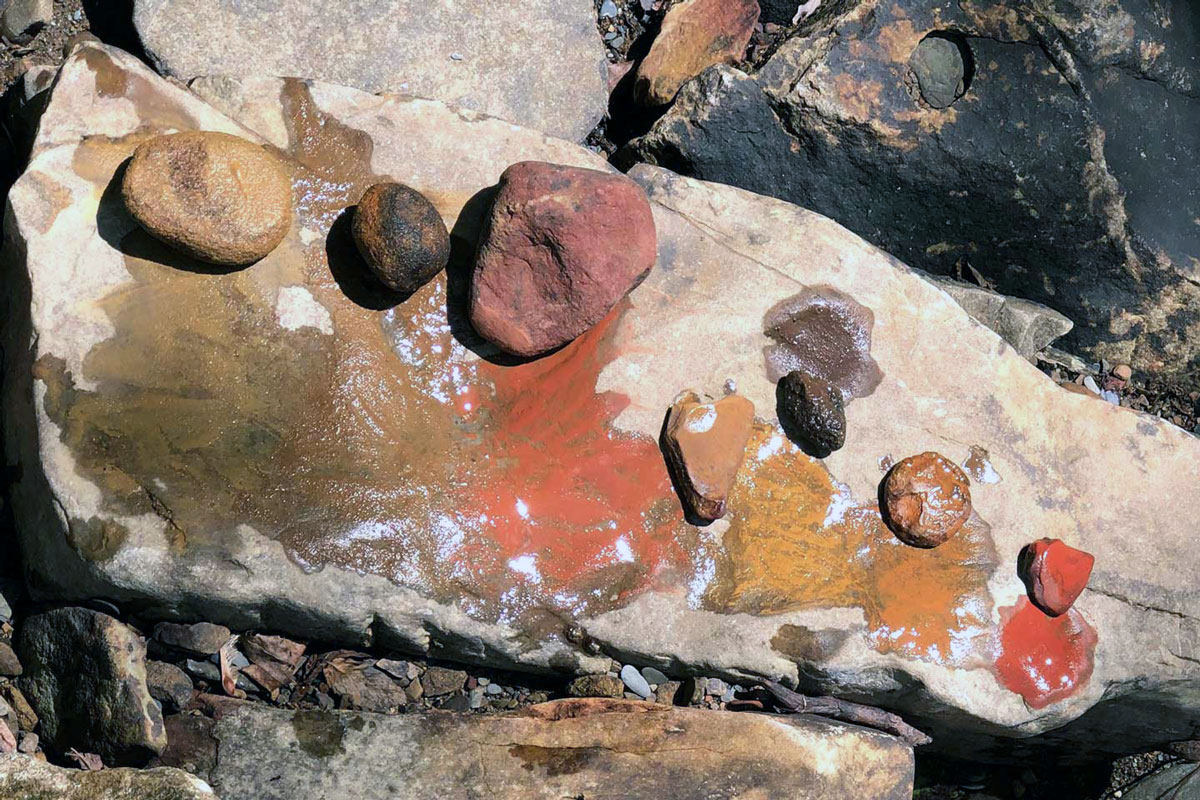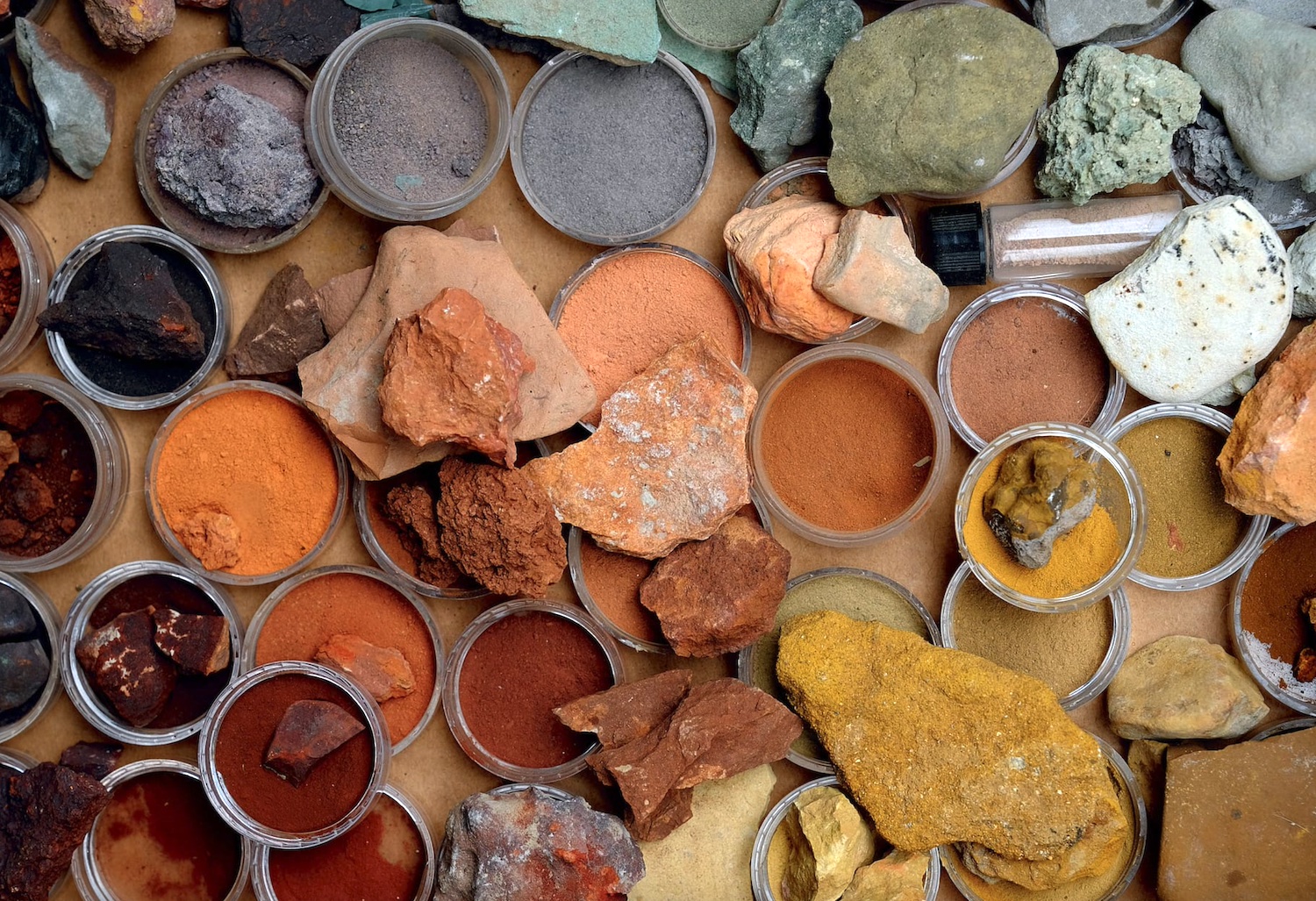Natural Coloring Earths require some simple processing to make them suitable for their various intended uses, and the accuracy required varies according to the type of pigment being treated. The main purpose of this operation is to clean the earth of impurities that can harm the quality of the pigment and consequently the quality of the color obtained from it. The “washing” thus gives rise to a much finer product that has greater coloring power and allows high levels of color saturation to be achieved.

Traditional Natural Pigments are always obtained from nature
Natural Coloring Pigments – The Stages Of Creation
Selective Cultivation
The first real selection process is done by hand directly at the extraction sites, and this process is extremely important because the quality of a coloring earth can change significantly even when it comes from the same deposit. Through this preselection it is possible to obtain purer pigments that lent themselves to the creation of many more shades of colors by virtue of their greater coloring power.
The First Crushing
The coloring earths, which have a granularity that varies from type to places of extraction, undergo an initial crushing process to obtain an initial coarse powder that better lends itself to the subsequent natural earth washing and smoothing operation. This process is not necessary for all coloring pigments and some more than others lend themselves to the use of the coarse powder although in general all high quality natural earths such as ochres obligatorily require purification operations.
The Washing
The coarse natural earths obtained from the first crushing were initially mixed with a modest amount of fresh water and left to stand for a few days in a kind of “steeping” process that took place in large tanks with low edges and impermeable bottoms. Then, through the use of siphons and sluice gates, the overlying water is removed and a new stream of clean water is fed in, causing it to come in from below so that the natural soils remain suspended instead of remaining accumulated on the bottom. At this point the mixture of water and natural pigments descends to the bottom where fine sieves are set up that permanently separate the coloring earths from most of the water and from where they are collected with large spoons
The Removal of Water
The complete removal of water is a very important part of the process of preparing the natural earths for use as coloring pigments. For this reason, the final process of washing is very important, and it is customary to collect the natural earths in large, thick-mesh cloth bags that are intended to let the liquid pass through without letting the solid earth pass through, thus continuing the filtering operation even after the material has been collected. After a few days inside these bags, the natural soils are ready to be dried.
The Drying
For the most common natural earths for the drying process, simply lay the material in the sun, which is the oldest and most traditional method. This is usually done outdoors in large dryers consisting of low-sided, slotted-bottomed wooden boxes that are set on wooden stands. This is just one of the drying processes that have been tried over the centuries for this process having realized early on how crucial this stage is to the quality of the pigment obtained. Some of the finest natural earths then underwent an additional sieving process before being stored in wooden barrels.

VVarieties of Natural Pigments obtained by stone grinding
Traditional Coloring Pigments Today
Today, many of the coloring earths are produced in laboratories and therefore many of these artificial products do not need any “purification” process since they are made in an industrial way and this is because today’s industry devoted mainly to profit, cannot afford the time and space necessary to carry out this operation in the traditional way. It is almost needless to say that this process gives results that are similar only to an inattentive and inexperienced eye. In fact, we have seen how much even each individual process of preparing the coloring earths, however simple, significantly affects the color, and each individual stage of preparation has its own specific function in a process that has spanned the centuries remaining virtually unchanged. At present, there are few notable exceptions that continue to produce natural earths with traditional methods and carry on an ancient culture that today is more necessary than ever in conservation restoration work and for decorative interventions in historically valuable palaces and apartments.
For those who would like to explore these topics further, we recommend reading the essay “Terre Coloranti Naturali e Tinte Murali A Base Di Terre” by Paolo Scarzella and Pietro Natale
Pics: Thisiscolossal.com – Festival.si.edu

